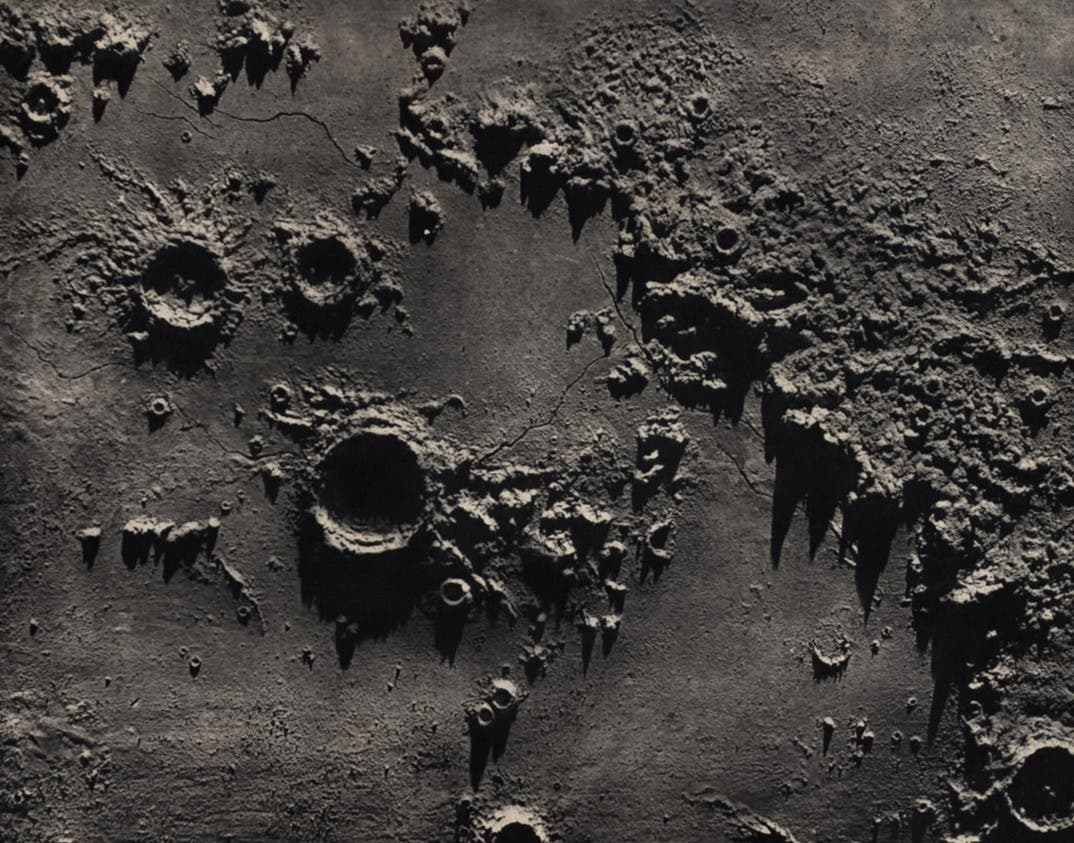Schröter, Johann Hieronymus (1745-1816).
Selenotopographische Fragmente sur genauern Kenntniss der Mondfläche – [vol. 1]. – Lilienthal: auf Kosten des Verfassers, 1791.
The face of the moon is not only furrowed with craters, valleys, and seas, but it is laced with narrow clefts, or rills, and the honor of discovering the first lunar rills lies squarely in the lap of Johann Schröter. Schröter built his own private observatory in Lilienthal and stocked it with the finest telescopes available--including several reflectors made by William Herschel. His Fragments of Lunar Topography contains the results of a dozen years of observing; it has a large re-engraving of the Mayer moon map, and more importantly, dozens of engraved views of particular features of the lunar landscape. Especially noteworthy in Schröter's lunar studies was his practice of studying the same feature under different angles of illumination, by which he was able to get a much better idea of actual lunar topography. He even calculated the altitudes of many lunar mountains.

